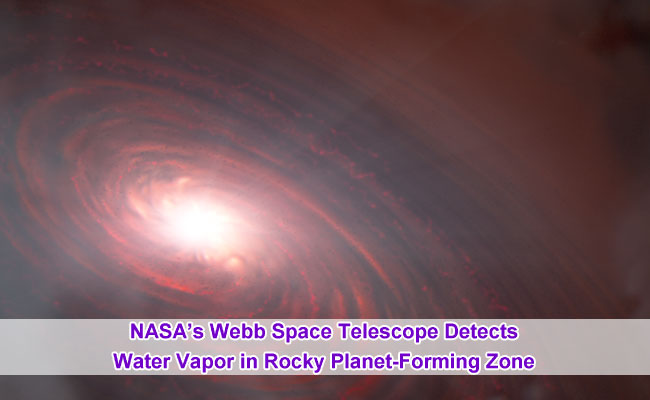NASA’s Webb Space Telescope Detects Water Vapor in Rocky Planet-Forming Zone
Sakshi Education

- Water is essential for life as we know it. However, how water reached Earth and whether the same processes could seed rocky exoplanets orbiting distant stars remain topics of scientific debate. These debates might benefit from new insights from the planetary system PDS 70, situated 370 light-years away. This star system includes both an inner and outer disk of gas and dust, separated by a gap that spans 5 billion miles (or 8 billion kilometers). Two known gas-giant planets reside within this gap.
- New data gathered by NASA’s James Webb Space Telescope’s MIRI (Mid-Infrared Instrument) have detected water vapor in the system’s inner disk, at distances of less than 100 million miles (160 million kilometers) from the star – the region where rocky, terrestrial planets may be forming. (The Earth orbits 93 million miles from our Sun.) Notably, this is the first time water has been detected in the terrestrial region of a disk already confirmed to host two or more protoplanets.
>> Download Current Affairs PDFs Here
Download Sakshi Education Mobile APP

Published date : 26 Jul 2023 04:49PM




















